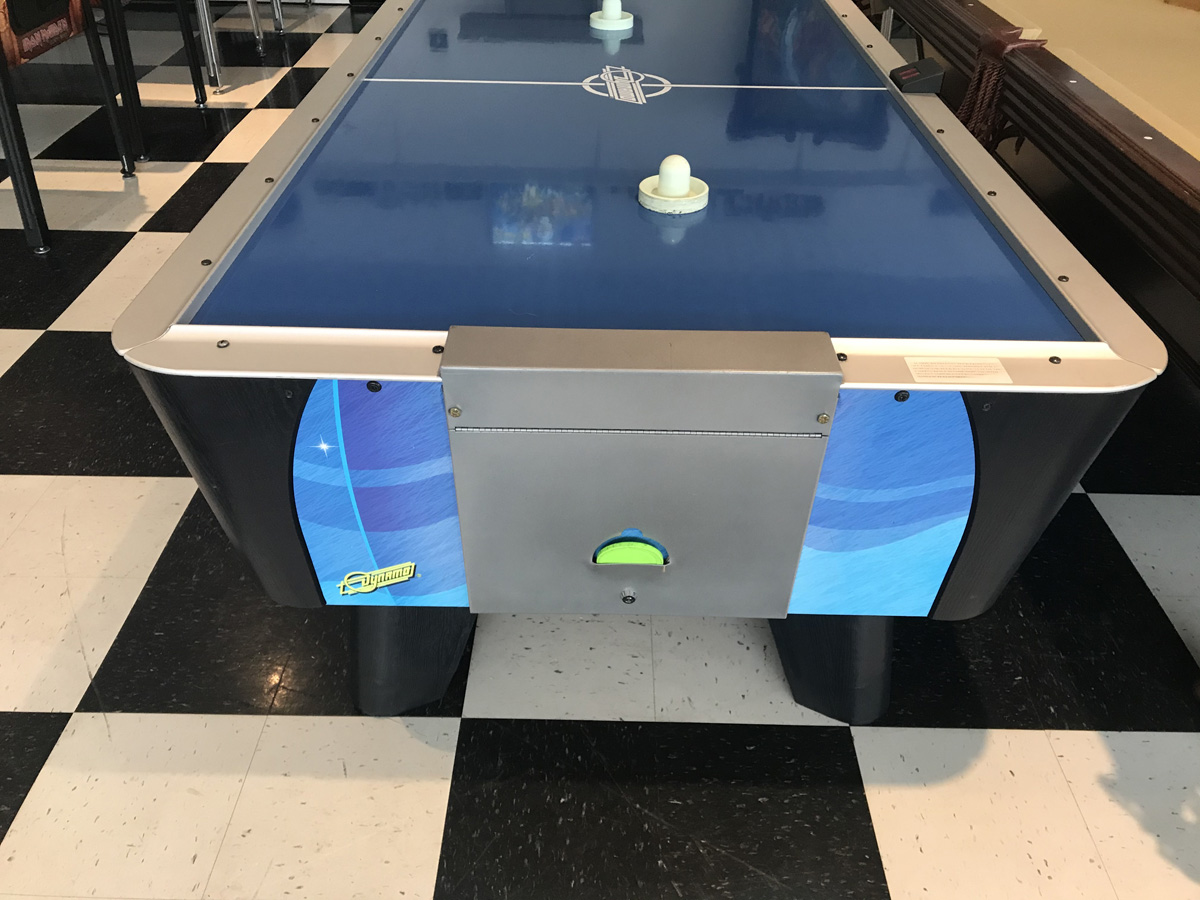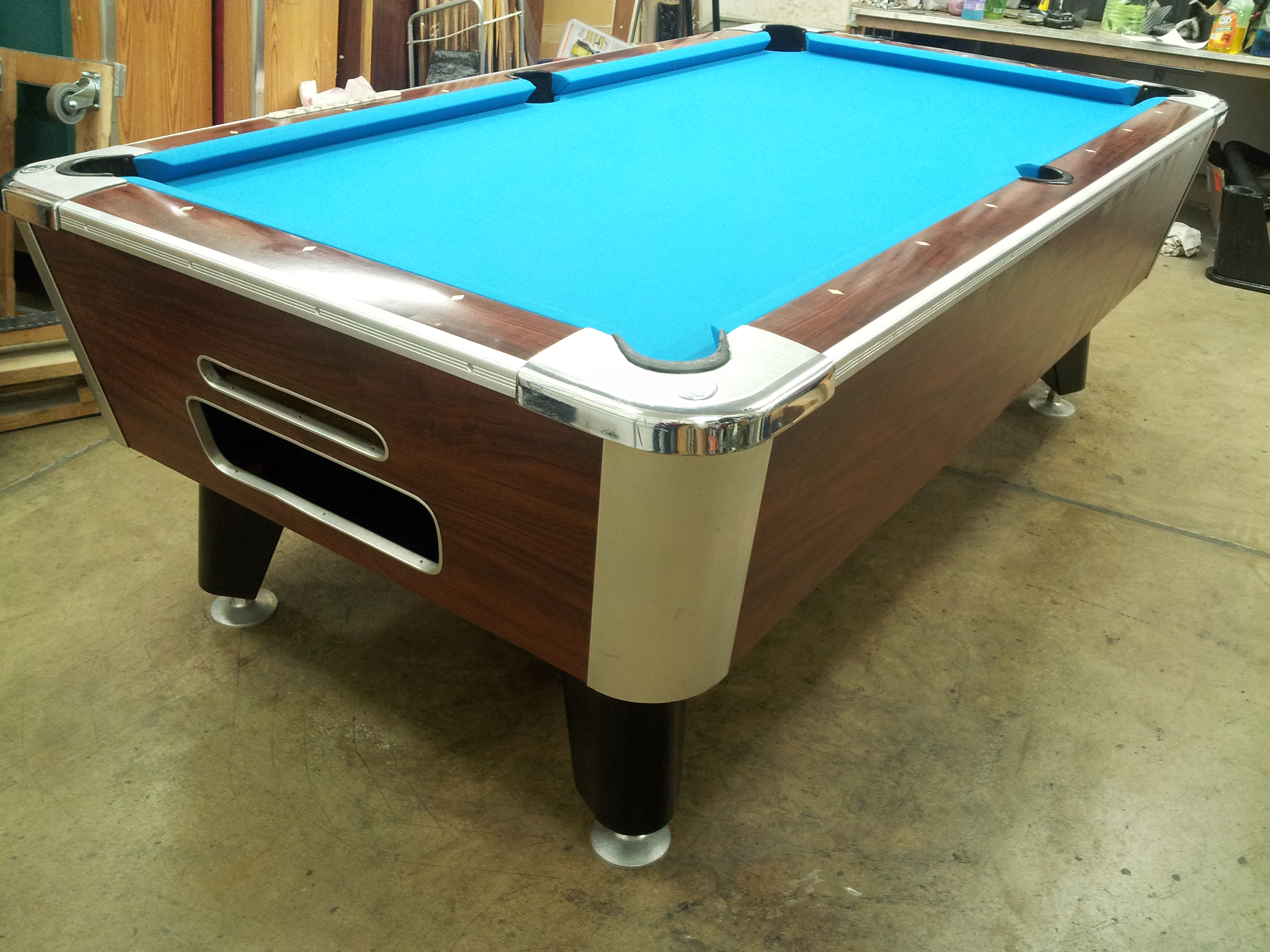
Coin operated valley mfg pool table drivers#
Williams remained enamored with baseball games for the rest of his career and became one of the principle drivers of the market both before and after establishing the Williams Manufacturing Company in 1943.

Miner established the Amusement Machine Corporation of America in Nevada in 1930 to sell the game, but in 1931, he sold the rights to Harry Williams when the sports game market went south. For a nickel, the player could keep swinging at balls until he made three outs.
Coin operated valley mfg pool table series#
Holes in front of each fielder represented outs, while a series of troughs along the back of the cabinet represented everything from a foul ball to a home run. Clearly inspired by the Chester-Pollard output, All American Baseball featured manikins displayed in a large wooden cabinet and a bat controlled by a lever similar to the one on the Play Football game. Both an avid baseball fan and an accomplished coin-op engineer, Miner combined his interests in the All American Baseball Game. The first known coin-operated baseball game was created by Californian George Miner in 1929. was released over the next two decades, the most widely emulated sport was baseball. While at least one game for just about every popular sport in the U.S. After World War II, with pinball on the decline and crane games banned entirely by the Johnson Act, sports games began appearing in greater numbers, although they were never one of the main selling points of the arcade. Nevertheless, new sports games would continue to appear from time to time during the Depression, complimenting the pinball and crane games that dominated the decade. This genre enjoyed its peak popularity between 19, after which the high cost of the cabinets and the nickel playing price left an opening for the penny play pinball machines to begin their rise to dominance. The first novelty games to achieve prominence in the late 1920s were the floor-model sports cabinets like the Chester-Pollard football and golf games that fueled the new Sportland arcade.

The playfield of All American Baseball, the first pitch-and-bat style coin-operated baseball game and the forthcoming book All In Color For a Quarter to be published by Keith Smith (no relation). Principle sources this time around were Automatic Pleasures by Nic Costa, Arcade 1: Illustrated Historical Guide to Arcade Machines by Richard Bueschel and Steve Gronowski, numerous articles in Billboard Magazine from the 1950s and 1960s, the website. This is part four in a six part series examining the history of the arcade industry from its earliest days until the dawn of the video game era. This helped precipitate a period of rapid consolidation that left only five major producers of coin-operated games by 1965. While the big inner city arcades did not disappear entirely, by the end of the 1950s coin-operated amusements had dispersed across fun spots like bowling alleys and skating rinks and shopping venues like department stores and discount houses while exhibiting a new focus on children’s entertainment.

At the same time, the decline of the inner city and the rise of suburbia coupled with the onset of the Baby Boomer generation signaled a shift in arcade venues once again. Instead, it was the novelty products that drove the industry, with new concepts like shuffle alleys and bumper pool briefly taking the market by storm and then being superseded by the next big thing.

Pinball did not vanish, of course, continuing to contribute significant revenues, but it was no longer the dominant game in production. Sports games, shooting games, athletic machines, crane games, and a whole host of other exotic contraptions continued to exist alongside pin tables under the catch-all categories of “novelty amusements” or “arcade pieces.” After pinball’s decline in the 1950s due to bingo machines, gambling stigma, and the Johnson Act, many of these products came out from pinball’s shadow to take center stage in the industry. Pinball ruled the roost of the 1930s arcade, selling in numbers that no other coin-operated amusement could approach, but it was hardly alone.


 0 kommentar(er)
0 kommentar(er)
